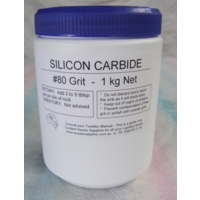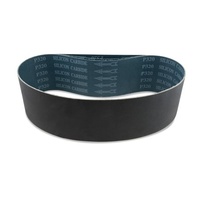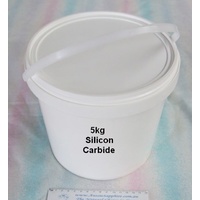he TRIM SAW is one of the most overlooked but essential machines in the Lapidary game. The ability to cut cracks and flaws from gem rough instead of grinding to shape will save you money! Being able to trim rough efficiently often means you can cut two gems instead of just grinding the whole lot away so it makes a heap of sense to own a trim saw. Doing the first preform by hand is also often overlooked for best results but is the best way to cut gems for good recovery in correct orientation - but that's another story.
What is the best diamond saw blade for cutting ???
This is a question we get all the time - unfortunately, there is no one answer to this. However, we hope the following information will assist you in your buying decisions. Diamond Blades of different types can vary dramatically in performance. Essentially, it's all about the quality of the diamond abrasive and manufacturing techniques.
In most cases the more expensive blade will outperform the cheaper option but cheaper blades have their place. Do not overlook cheaper blades as if treated well, you may find them more economical (even if you end up with a pile of worn out ones).
One thing is for sure: any blade will wear out and can easily be damaged so be prepared to replace them from time to time. Knowing how to care for your blade will make it last longer and cut better.
There are some simple guidelines in regard to cutting rocks with diamond.
- Safety First !
- Choose the correct blade for the job
- Be gentle - blades will last long when treated well
- Redress your blade when necessary
- Use the correct coolant when cutting
- Use correct speed for your size blade
1. SAFETY FIRST
Some may claim that diamond blades will not cut fingers but please remember that they are spinning very fast so these saws should always be treated with appropriate respect. While a diamond blade will not cause the damage of a toothed blade if you get too close, they will hurt, Take care to keep fingers away from the blade when cutting and wear safety glasses to avoid eye damage from flying debris. Wearing safety tape on your fingers or thin surgical gloves can help you hold the material securely and protect you from accidental contact with the diamond blade.
2. CHOOSE THE CORRECT BLADE TYPE
There are a range of different diamond blades available - some are cheaper and do not last as long while the sintered blades are more expensive but should last longer if used correctly. See our Blade Type buying guide for more information on this.
If you are cutting expensive rough think about $ per cut - a run off or chip from a poor blade could cost big dollars. If you are cutting big lots of abrasive rock, then a good quality Continuous Rim Blade will normally be best and most economical option. For hobby work with small rough, the mid range cheaper blades may be a better choice.
Thin kerf blades are less wasteful when cutting valuable rough - you may need a thicker blade when cutting larger slabs of hard rock. Very thin blades are more delicate/flexible and should be used carefully to avoid damage. Generally, we offer blades of suitable thickness for gemstone rough.
3. START GENTLY WITH NEW BLADES
Start any new Blade of with slower more gentle cuts as this can help bed the Diamond into the blade rather than rip the looser and more exposed particles off in the first couple of cuts. New blades generally cut well so it is tempting to get stuck into it but better to cut slowly and carefully.
4. DRESS THE BLADE WHEN NECESSARY
If the blade becomes Dull, don't keep forcing it to cut but instead try redressing it. This is done with a Dressing Stick or you can use an old Silicon Carbide wheel (these work great). When a blade is cutting, the temperature at the cutting edge gets very high (even when using coolant). Sometimes, it is high enough to actually melt small particles of metal from the blade which jam between the minute diamond particles - this prevents the blade from cutting effectively. Dressing helps remove this metal and expose fresh Diamond for cutting.
Remember it is possible that the blade is simply worn out. In this case, dressing the blade will not help and you will need to get a new one. TIP: use a loupe to see if the blade has exposed diamond abrasive visible or is blocked with metal.
5. USE COOLANT WHEN CUTTING
Always use Coolant!! Water is the usual choice for smaller jobs but for larger diameter blades (say 10" and up), you will need to use a cutting oil as water is not carried efficiently up to the cutting table with the blade in these cases. If you need to use oil, we recommend a light paraffinic mineral oil such as Rockhound Oil.
After use, water (or coolant) should be drained from the tank and the blade dried to prevent rusting - a spray of WD40 over the blade is often a good idea. A Diamond Saw additive is available that contains a rust inhibitor but really this should be removed if left for long periods as the coolant can "go off".
6. USE THE CORRECT SPEED
Make sure your machine is running at the right speed - this can affect wear and cutting ability although there is usually some tolerance. Never run a Blade faster than the manufacturer recommends. If your blade is damaged (eg has a chunk out of it or is bent) then throw it away as it could be dangerous to use.
7. MORE INFORMATION
The Barranca website has some excellent information on saw blades, recommended running speeds, etc. See the following links to learn more:
- Wet Polishing Guide - Procedures and suggestions for polishing lapidary materials.
- Speed Guidelines - Diamond lapidary blade speed recommendations.
- Sawing Guidelines - Diamond blade sawing recommendations.
- Cutting Depth Guidelines - Cutting depth guidelines for stone & lapidary blades.
- Calculator - surface feet per minute, inches to millimetres, fractions to decimals.
Enjoy your Saw - it should save you much money in salvaged rough but remember you will have to replace blades as a small ongoing cost.







